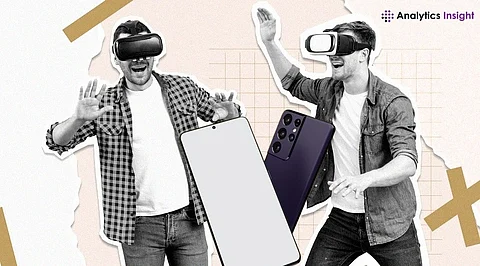

Virtual Reality (VR) has transformed the way we interact with technology, offering immersive experiences that blur the line between the digital and physical worlds. Creating VR applications for Android devices opens up a world of possibilities for developers, allowing them to craft engaging and interactive experiences. In this guide, we'll walk you through the process of building your first VR app for Android. From setting up your development environment to implementing VR features and testing your app, this comprehensive tutorial will equip you with the knowledge and tools needed to dive into the exciting realm of virtual reality app development.
Before diving into VR app development, you'll need to set up your development environment. Start by installing Android Studio, the official integrated development environment (IDE) for Android development. Ensure that you have the latest version of Android Studio installed, along with the necessary SDK components and tools. Additionally, you'll need a compatible Android device for testing your VR app. Consider using a smartphone with VR capabilities or an Android emulator for initial development and testing. Once your development environment is set up, you're ready to start building your VR app for Android.
Selecting the right VR framework is crucial for building your VR app efficiently. While there are several options available, Google's Cardboard SDK and Google VR SDK for Unity are popular choices for Android VR development. Cardboard SDK offers a lightweight and straightforward solution for building VR experiences compatible with a wide range of Android devices. On the other hand, Google VR SDK for Unity provides a more robust toolkit for creating immersive VR applications using the Unity game engine. Evaluate your project requirements and familiarity with development tools to choose the framework that best suits your needs.
Designing a compelling VR experience involves creating immersive environments, intuitive interactions, and engaging content. Start by conceptualizing your VR app's theme, storyline, and target audience. Consider the user's perspective and design interactions that feel natural and intuitive within the VR environment. Pay attention to factors like user comfort, navigation, and feedback mechanisms to ensure a seamless experience. Leverage VR design principles, such as spatial audio, hand tracking, and gaze-based interactions, to enhance immersion and interactivity. Prototype your VR experience iteratively, gathering feedback from testers to refine and optimize your design before proceeding to development.
Once you have a clear design vision, it's time to implement VR features into your app. Whether you're building a 360-degree video viewer, an immersive game, or a virtual tour application, leverage the capabilities of your chosen VR framework to bring your vision to life. Implement features like head tracking, stereoscopic rendering, and user input handling to create a dynamic
and interactive VR experience. Utilize the APIs and tools provided by your VR framework to integrate VR-specific functionalities, such as spatial audio, gesture recognition, and scene transitions. Pay attention to performance optimization techniques, such as level of detail (LOD) rendering and occlusion culling, to ensure smooth frame rates and minimize motion sickness. Test your VR features thoroughly on different Android devices to ensure compatibility and optimal performance across a range of hardware configurations.
Testing is a critical phase in VR app development to identify and resolve potential issues before releasing your app to users. Conduct comprehensive testing on various Android devices, paying attention to performance, usability, and VR immersion. Use debugging tools provided by your IDE and VR framework to diagnose and fix any bugs or issues that arise during testing. Solicit
feedback from testers to gather insights into the user experience and iterate on your app accordingly. Perform usability testing to ensure that interactions and controls are intuitive and easy to understand within the VR environment. Thorough testing and debugging will help you deliver a polished and reliable VR app for Android users.
Join our WhatsApp Channel to get the latest news, exclusives and videos on WhatsApp
_____________
Disclaimer: Analytics Insight does not provide financial advice or guidance. Also note that the cryptocurrencies mentioned/listed on the website could potentially be scams, i.e. designed to induce you to invest financial resources that may be lost forever and not be recoverable once investments are made. You are responsible for conducting your own research (DYOR) before making any investments. Read more here.
